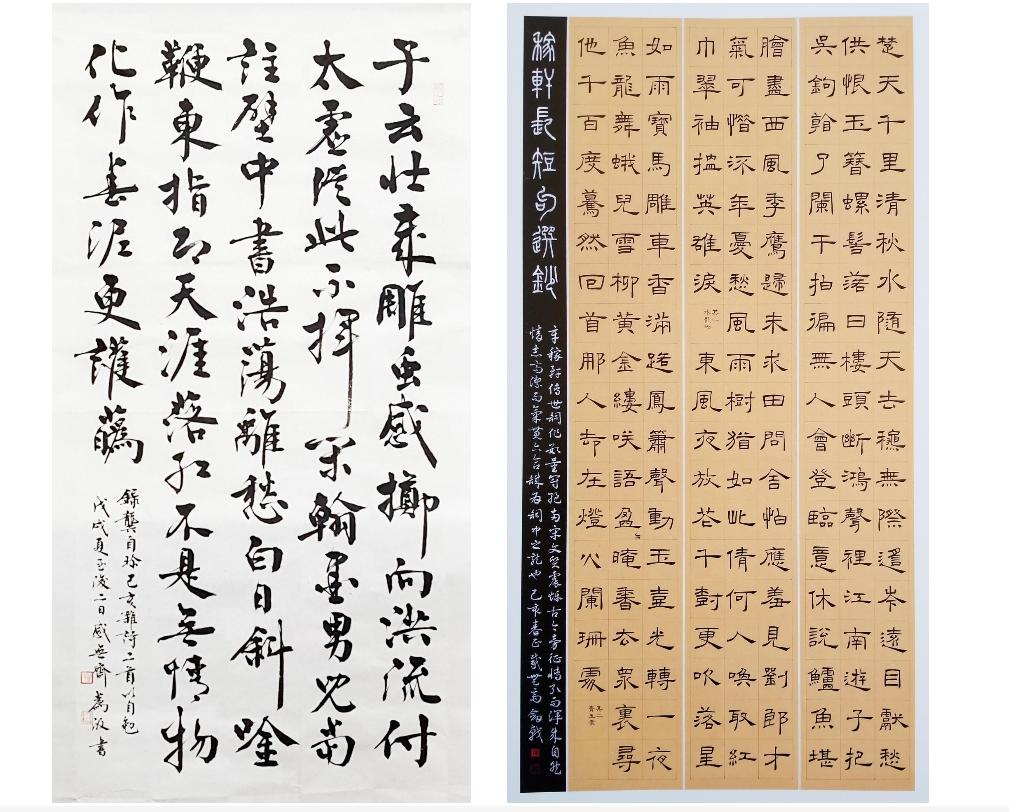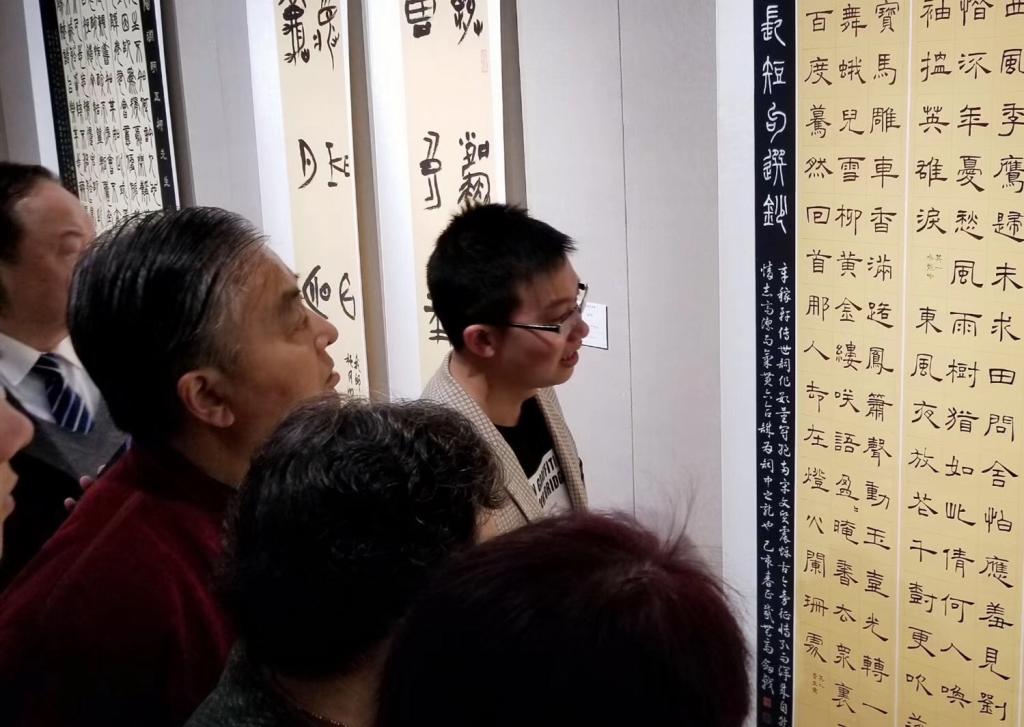On April 19th, a cultural exchange activity was held at Shanghai College of International Education, USST. Both Chinese and international students opened arms to the traditional Chinese treasure of calligraphy. As the organizer of the activity,Dong Jianji who is a calligraphic teacher, accepted our interview and showed us the wisdom that is embraced in Chinese calligraphy.

The fourth from the left is Dong Jianji
The interview started with Dong’s story about calligraphy in his early childhood. Born in a literary family with his grandfather who was a calligraphy enthusiast, Dong developed a strong interest in calligraphy and then began to learn basic things about calligraphy from his grandfather. Later, he met with his first calligraphic teacher in primary school where he spent unforgettable times when he used to practice writing in a Tai Chi gait for at least two hours a day. After many years of hard work, he could write beautiful characters and be entrusted to inscribe the name of USST in 2006, which now can be seen at the front gate of USST. Recently, he has also won the award in the 8th seal and clerical script exhibition in Shanghai. According to Dong, calligraphy cannot be acquired overnight. He pointed out that only with great interest, correct methods and long-term persistence can calligraphy be practiced well.
Calligraphy, as a traditional Chinese art, maintains a deep relationship with the history of China and its cultures. Dong shared his own understanding of Chinese calligraphy with us during the talk. He reckoned that calligraphy is not only an art of lines or a plastic art, but also the epitome of Chinese cultures covering: classical literature, traditional Chinese painting, music, martial arts and Chinese philosophy. Chinese calligraphy evolved along with Chinese characters and they kept merging with one another. The rhythm of Chinese calligraphy is closely related with the level and oblique tones of classical poems. Calligraphy and painting differ a lot in structure, but are similar in artistic conception. He also shared his own experience with us that calligraphy is also interlinked with music and martial arts. He often practices Tai Chi in his spare time and noted: “Calligraphy and Tai Chi both originated from Chinese classical philosophy The Book of Changes, whose core idea is the dialectical unity of everything. Practicing Tai Chi allowed me to master the technique of calligraphy”.

In addition to the pursuit of calligraphy, Dong is committed to spreading calligraphic cultures and fostering an atmosphere for people around the world to appreciate the beauty of calligraphy. In order to help students have a better understanding of calligraphy and develop more interest in it, he has carefully designed his class. In his class, students are expected to appreciate the beauty of the writing style, which refers to the evolution of Chinese characters and their varied styles. Then they learn to understand the cultural implication of the writing tools such as: the writing brush, Xuan paper, the inkstone and the paperweight. Furthermore, students have an opportunity to experience the writing process and grasp the writing technique. Through the course, students learn to understand the origin of calligraphy and form a perception of it. As for the activity that international students joined in, he shared his expectation of spreading Chinese cultures to domestic and international students. He believes that cultural communication can start from calligraphy education. “Foreign students are now studying in our land, and we can easily show how our cultures are to them. And if they are really attracted, they will go back to their motherlands, and may introduce this kind of experience that they had in China. It's also a form of cultural communication.” Moreover, by opening classes and founding clubs, he wants to foster a cultural atmosphere on campus and create a brand of campus culture.

At the end of the interview, Dong also suggested that young people have a try at calligraphy. Nowadays, most young people are under great pressure and anxiety. The calligraphic spirit can keep people peaceful and upright while they practice calligraphy. He hopes that through his own efforts, more people will be interested in calligraphy and learn more about the calligraphic spirit, which will bring them real pleasure. In turn, he will realize the self-fulfillment.

 Home
·
News & Events
·
Content
Home
·
News & Events
·
Content

